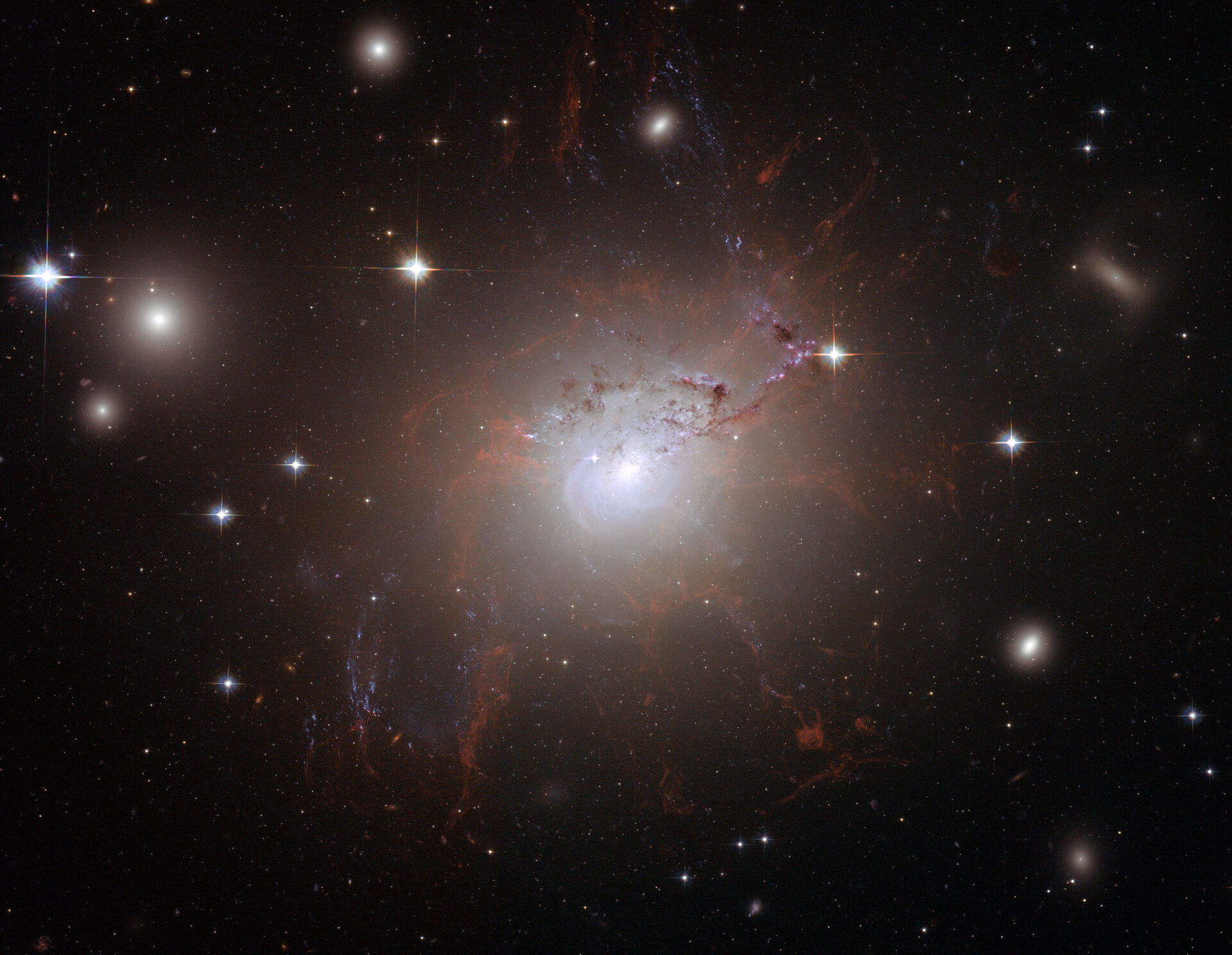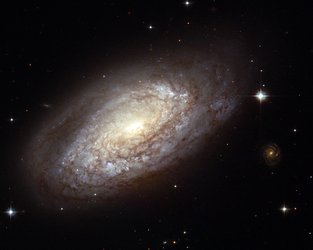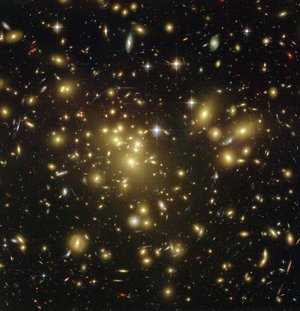Hubble sees magnetic monster in erupting galaxy
The Hubble Space Telescope has found the answer to a long-standing puzzle by seeing the details of giant but delicate filaments shaped by a strong magnetic field around the active galaxy NGC 1275.
These filaments are the only visible-light manifestation of the intricate relationship between the black hole hosted at the centre of the galaxy and the surrounding cluster gas. They provide important clues about how giant black holes affect their surrounding environment.
NGC 1275 is one of the closest giant elliptical galaxies. It is an active galaxy lying at the centre of the Perseus Cluster of galaxies. The supermassive black hole at its core blows bubbles of radio-wave emitting material into the surrounding cluster gas. Its most spectacular feature is the lacy filigree of gaseous filaments reaching out beyond the galaxy into the multi-million degree X-ray emitting gas that fills the cluster.
The full release is available on ESA's Science and Technology pages.
Notes for editors:
The Hubble Space Telescope is a project of international cooperation between NASA and ESA.
For more information:
Andy Fabian, Institute of Astronomy, University of Cambridge, UK
E-mail: acf @ ast.cam.ac.uk
Lars Lindberg Christensen, Hubble/ESA, Garching, Germany
E-mail: lars @ eso.org















 Germany
Germany
 Austria
Austria
 Belgium
Belgium
 Denmark
Denmark
 Spain
Spain
 Estonia
Estonia
 Finland
Finland
 France
France
 Greece
Greece
 Hungary
Hungary
 Ireland
Ireland
 Italy
Italy
 Luxembourg
Luxembourg
 Norway
Norway
 The Netherlands
The Netherlands
 Poland
Poland
 Portugal
Portugal
 Czechia
Czechia
 Romania
Romania
 United Kingdom
United Kingdom
 Slovenia
Slovenia
 Sweden
Sweden
 Switzerland
Switzerland





































